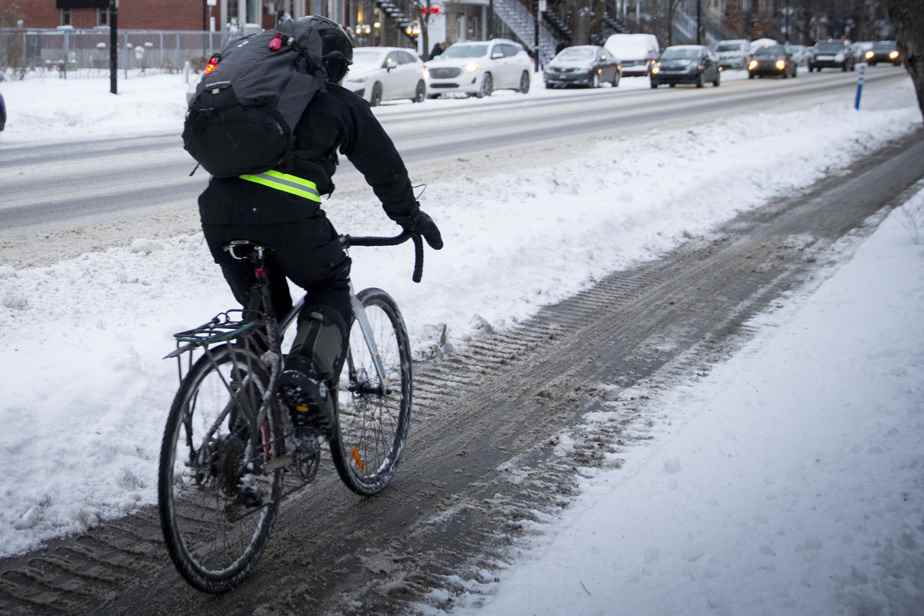To “encourage active travel year-round,” Longueuil will clear snow about 60 kilometers of bike paths on its territory this year, double what was done last season. The City intends to increase the pace in the coming years, to reach approximately 120 kilometers by 2025.
Posted at 10:01 a.m.
This was confirmed Thursday by the head of the environment and active mobility on the executive committee of Longueuil, Marjolaine Mercier. “Our goal is to encourage cycling and help cyclists better plan their trips. Cycling in winter is not only for enthusiasts or sports enthusiasts, it is also accessible and possible for families and the uninitiated,” she said.
Since last year, the municipality’s “white network” already totals 27.5 kilometers of cycle paths. In 2020, before the arrival of the Fournier administration, only 5 kilometers were plowed. The network will benefit this year from an addition of 32 kilometers of snow-cleared lanes. In 2023-2024, we plan to add an additional 17.5 kilometres, as in 2024-2025.
In 2025-2026, the City will add 22 kilometers for winter cyclists, who are more and more numerous in Quebec. Within four years, Longueuil will therefore have 116.5 kilometers of snow-cleared cycle paths. More than half of the tracks have so far been reserved for bicycles.

IMAGE PROVIDED BY THE CITY OF LONGUEUIL
The City states that this improvement “represents impressive variations compared to winter 2020-2021 and improvements of around 324%, if we compare the current network with that of last winter alone”.
Starting this season, several major bike paths in Longueuil will be cleared of snow, including the trails located on their own site and separated from car traffic on Roland-Therrien and Jacques-Cartier boulevards, in Vieux-Longueuil. The Edna-Maricourt footbridge, which passes over Route 112-116 in Saint-Hubert, will also be cleared of snow.
Bollards removed, strips open
In addition, the majority of on-street bike lanes will now be “open year-round”. The City says it has “removed the majority of the bollards separating the bike lanes and the traffic lanes that delimit the bike lanes to facilitate snow removal”. An exception remains: that of boulevard La Fayette, where Longueuil wishes to test “new techniques which allow them to be left in place all winter and thus contribute to making travel safer”.
We invite cyclists all the same “to remain vigilant and to adapt their driving according to the weather conditions and the state of the road surface”. “Equipping winter tires with studs or studs is a good practice to adapt to our northern climate”, remind the authorities on this subject.
On the island of Montreal, the craze for winter cycling is on the rise. In February, The Press reported that the increase in the number of people using winter bike paths in Montreal in 2020 compared to the 2015-2019 average is 83%, according to the Montreal office of Eco-Counter.
More generally, between 2020 and 2021, the number of two-wheeled trips has increased by 20% in the metropolis, according to what the counters of the various cycle paths have measured. During the first nine months of this year, the counters have already registered a total of more than 12 million passages. This report follows the marked increase observed in 2021, when nearly 17 million passages were recorded, compared to 14 million the previous year.

